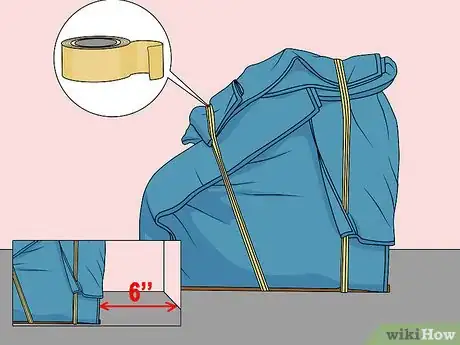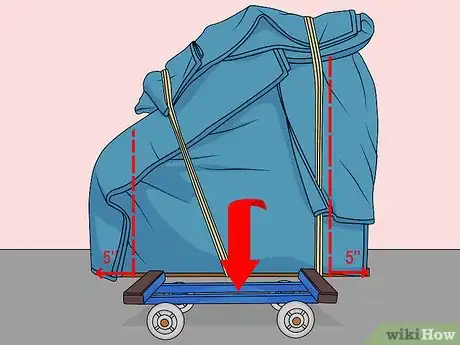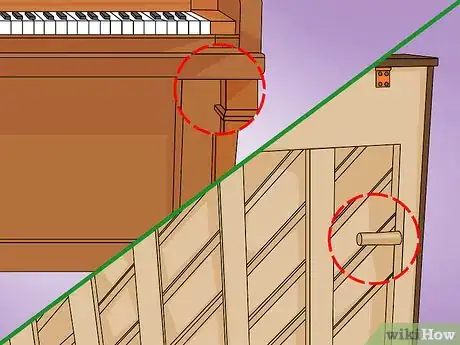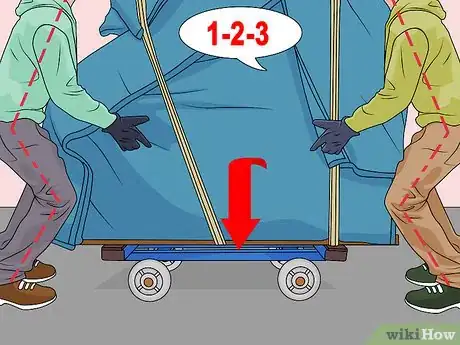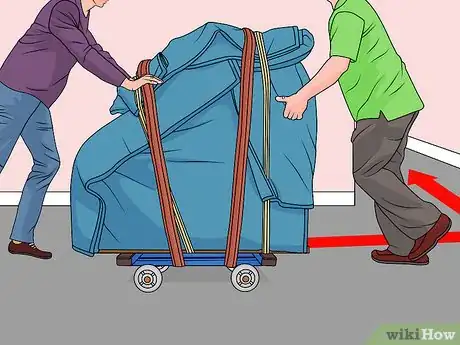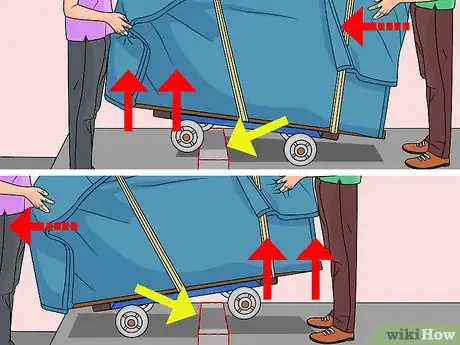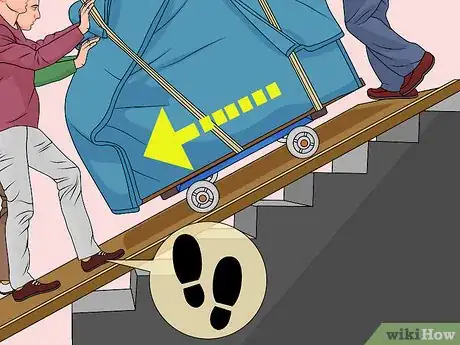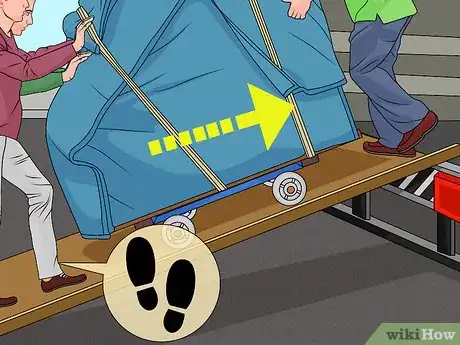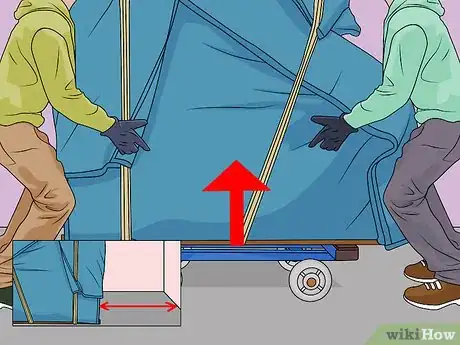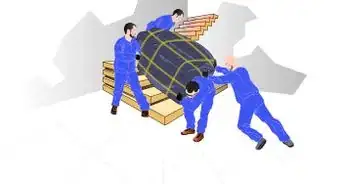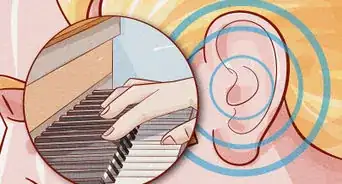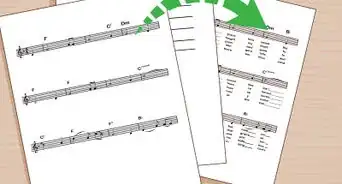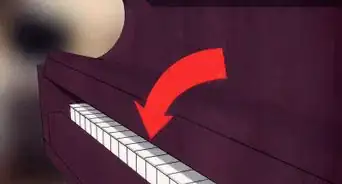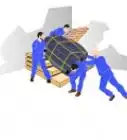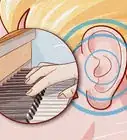This article was co-authored by wikiHow Staff. Our trained team of editors and researchers validate articles for accuracy and comprehensiveness. wikiHow's Content Management Team carefully monitors the work from our editorial staff to ensure that each article is backed by trusted research and meets our high quality standards.
There are 7 references cited in this article, which can be found at the bottom of the page.
This article has been viewed 277,328 times.
Learn more...
An upright piano can weigh anywhere from 300 to 900 pounds (136.1 to 408.2 kilograms).[1] Moving anything of this size calls for several people to help with the move. It also requires that you take your time and be careful not to damage the piano, other furniture, walls, and floors. Bodily injury is also a potential problem if lifting is done improperly. But by using enough helpers and following basic safety guidelines, you can get yourself and the piano through the moving process in good shape.
Steps
Getting Ready to Make the Move
-
1Assemble a moving team. Call up friends, neighbors, and relatives and ask them if they'd be willing to help you move the piano. At minimum, aim for a group of four people in at least average physical shape, who are willing to spend one to two hours helping you with the move. The more helpers the better: Five people in average physical shape will be more effective than three people in above-average shape.[2]
- Do not ask for help from anyone who has a history of back, leg, hip, or arm injuries.
- Children should not help with piano moving.
-
2Wear appropriate clothing. Take some time to select an outfit that is comfortable and loose enough to be flexible. For example, pants that are too tight could tear as you squat to lift the piano. Wear athletic shoes or work boots with a treaded sole that grips floors and outdoor surfaces well. And use a pair of work gloves with rubber-treated palms to help you get a better grip on the piano.[3]
- Don't wear long jewelry, such as necklaces or bracelets, that could get caught in tight spaces while moving.
- Do without excessively baggy clothing as well, since it too can get caught during the move.[4]
Advertisement -
3Cover up the keyboard. To protect the keys from damage during travel, put the lid down over the keyboard and lock it into place.[5] If the lid does not have a lock, secure it with some tape that won't remove the wood's paint or stain, such as masking tape or electrical tape.
-
4Protect the piano with moving blankets. Have at least two movers shift the piano back from the wall about 6 inches (15.2 centimeters) by pulling out the front legs. Using masking tape or electrical tape, secure moving blankets or other padded fabric to cover all painted and lacquered surfaces of the piano. The blankets will shield the piano from getting dented and scratched on the way to the moving truck and during the drive to your destination.
- Some upright pianos have cylindrical moving handles attached to the outer frame of the back side. Be careful not to cover these with blankets, since you'll need to access them when it's time to lift the piano.[6]
-
5Clear a path to the exit. Move aside any furniture or rugs that will get in the way of the piano as you roll it toward the exit door. If the door does not stay open on its own, have a mover or an extra helper hold it for you. Make sure any children are supervised during the move, and are clear of the exit path.
-
6Set up ramps. If you'll need to carry the piano down any porch steps, you'll need to use a metal stair ramp. These can be rented from moving companies, sometimes from the same company you may be renting a moving van from. Put all ramps, including the moving van's loading ramp, in place before starting the move.[7]
- To find a stair ramp, look up “Moving Equipment Rental” in a telephone directory or online search.
Moving the Piano to Another Residence
-
1Position the movers and a dolly. Use a 4-wheel dolly that is at least half the length of the piano.[8] Center the dolly underneath the piano a couple of inches (about 5 centimeters) from the pedals. Position one mover at each end of the piano, and one in front to help steady the piano onto the dolly. A fourth mover can act as a “spotter” who points out potential collisions with walls or furniture, and holds open doors if needed.[9]
-
2Find the best grip. The movers on either end of the piano can grip the corners underneath the ends of the keyboard with their left hand, and the handle behind the piano with their right hand. The person in the front of the piano should stand just behind the dolly and grip underneath the keyboard.
- If there are no handles on the back side of the piano, there should be a horizontal board near the middle or top of the frame that can be gripped instead. If it is near the top of the frame, push upward with your palm to lift.
-
3Lift the piano onto the dolly. The movers on each end of the piano should begin lifting from a squatting position. This will allow the legs to do most of the lifting and prevent back strain. Do a “1-2-3” count, and then lift the piano high enough to clear the height of the dolly. The person in front of the piano will support and guide the piano only once it is lifted, backing up and helping the other two to place the base of the piano squarely centered onto the dolly.[10]
- Take care never to support the weight of the piano on one or both of its thin front legs. This can be avoided by tilting the piano slightly back when lifting it.[11]
-
4Secure the piano to the dolly. Using moving straps or rope, tie the piano down to the dolly. Pass the straps or rope underneath the dolly and over the top of the piano, and tighten the strap ratchet or tie the rope knot at the piano's back side. There should be enough tension so that when one end of the piano is lifted, the dolly moves with it.[12]
-
5Roll the piano to the exit. The movers at each end of the piano should guide it slowly through the residence to the threshold of the exit. Be careful to stabilize the piano while going over any bumps or dips in the ground. The person who was lifting at the front of the piano can now help the “spotter” with guiding the piano.
-
6Clear the threshold. At the exit's threshold, lift the lead end of the piano slightly and push from the back end until the dolly's first pair of wheels clears the bump. Then the mover on the side that is still inside the residence lifts their end slightly, while the person on the lead end pulls slowly backward until the second pair of wheels clears the bump.[13]
-
7Guide it down the stair ramp. If you have front or back porch steps and are using a ramp, position two movers at the front end of the piano and one at the back. The two movers at the front will catch its weight as you roll it down the ramp, and the person at the back end will guide it downwards from the top of the ramp.
- Proceed slowly on the ramp, taking small steps as you push and pull the piano down onto the pavement.
- Have spotters look out for cracks or separations in the pavement as you roll the piano to the truck ramp. Avoid these if possible, otherwise push the dolly slowly over them.
-
8Push the piano up the truck ramp. Position the two strongest movers at the back end of the piano, another at the lead end, and one alongside the ramp at the back side of the piano.[14] As the movers at the back end push the piano up the ramp, the person at the lead end guides the front end up into the truck.[15] The person at the side of the ramp is there to stabilize the piano in case it starts to tilt back perpendicularly to the ramp.
-
9Secure the piano in the truck. Roll the piano against a wall in the truck. Using moving straps, fasten the piano lengthwise to the support bars or rails along the truck's interior wall. Make sure the straps are tightened to the point that the piano can't be shifted more more than an inch (2.54 centimeters).[16]
Placing the Piano in the New Residence
-
1Roll the piano out of the truck. Once at your destination, undo the straps that were securing the piano to the truck wall. At the top of the truck ramp, position two movers at the lead end of the piano, one at the back end, and one alongside the ramp at the back side of the piano. Slowly guide the piano down the ramp.
-
2Move it into the new space. Use a stair ramp again if the residence has a high porch, and push the piano up the ramp with two movers at the back end, and one at the lead end guiding it up the ramp. Then slowly lift the dolly wheels one pair at a time over the threshold of the entrance.
-
3Set the piano into place. Carefully move the piano through the new residence to its intended location. Remove the straps or rope that were securing it to the dolly, then push it back against the wall. With one mover on each end of the piano, and a third holding the dolly, lift the piano from a squatting position off the dolly. The person holding the dolly should then pull it back and clear of the piano. The movers at each end can then lower the piano very slowly to the ground.
Community Q&A
-
QuestionHow do you move a piano upstairs?
 Community AnswerHire a professional piano mover, since this is tricky and potentially very dangerous.
Community AnswerHire a professional piano mover, since this is tricky and potentially very dangerous. -
QuestionHow do you move a piano down steep stairs?
 Community AnswerIt is recommended that you hire a professional piano mover to do this for you.
Community AnswerIt is recommended that you hire a professional piano mover to do this for you. -
QuestionCan I move a piano in an open trailer if I wrap it in blankets and plastic?
 Community AnswerYes. As long as it doesn't get wet or damp, you should be fine. You need to make sure to secure the piano, too.
Community AnswerYes. As long as it doesn't get wet or damp, you should be fine. You need to make sure to secure the piano, too.
Warnings
- Avoid using a carpeted dolly. The piano can slip forward and tip with these. Use a rubber capped dolly instead.⧼thumbs_response⧽
- Don't roll the piano on its casters, as they are too weak to support the weight of the piano while it is being moved.⧼thumbs_response⧽
- Rolling a heavy upright piano can dent wood floors and crack tiles. You may need to put some type of protection on the floor, such as plywood, to roll the piano over.⧼thumbs_response⧽
- 'Some pianos may have a built in "piano board" on their bottom side. In this case, be aware that the piano will want to tip forward toward the keyboard.⧼thumbs_response⧽
Things you'll need
- 4-wheel dolly
- moving blankets
- portable ramp for stairs
- At least four movers
References
- ↑ http://www.learntomove.com/piano-moving-basics.php
- ↑ http://www.mymovingreviews.com/move/piano-moving
- ↑ http://www.mymovingreviews.com/move/piano-moving
- ↑ http://www.mymovingreviews.com/move/piano-moving
- ↑ http://www.mymovingreviews.com/move/piano-moving
- ↑ https://www.ozmoving.com/blog/moving-tough-stuff-how-move-piano
- ↑ https://www.youtube.com/watch?v=NHat0kScC-8
- ↑ http://www.learntomove.com/piano-moving-basics.php
- ↑ http://www.mymovingreviews.com/move/piano-moving
- ↑ https://www.youtube.com/watch?v=NHat0kScC-8
- ↑ https://www.youtube.com/watch?v=NHat0kScC-8
- ↑ http://www.mymovingreviews.com/move/piano-moving
- ↑ https://www.youtube.com/watch?v=NHat0kScC-8
- ↑ http://www.learntomove.com/piano-moving-basics.php
- ↑ https://www.youtube.com/watch?v=NHat0kScC-8
- ↑ http://www.learntomove.com/piano-moving-basics.php
About This Article
To move an upright piano, you'll need at least 4 people to help you since pianos can weigh anywhere from 300 to 900 pounds. Before you get started, cover up the piano with moving blankets to protect it from damage. Then, when you're ready, lift the piano onto a 4-wheel dolly and secure it with moving straps or rope. Finally, roll the piano to wherever you're moving it to, using a ramp if you need to move it up or down a set of stairs. To learn how to secure a piano inside of a moving truck and safely move it to its new destination, scroll down!



